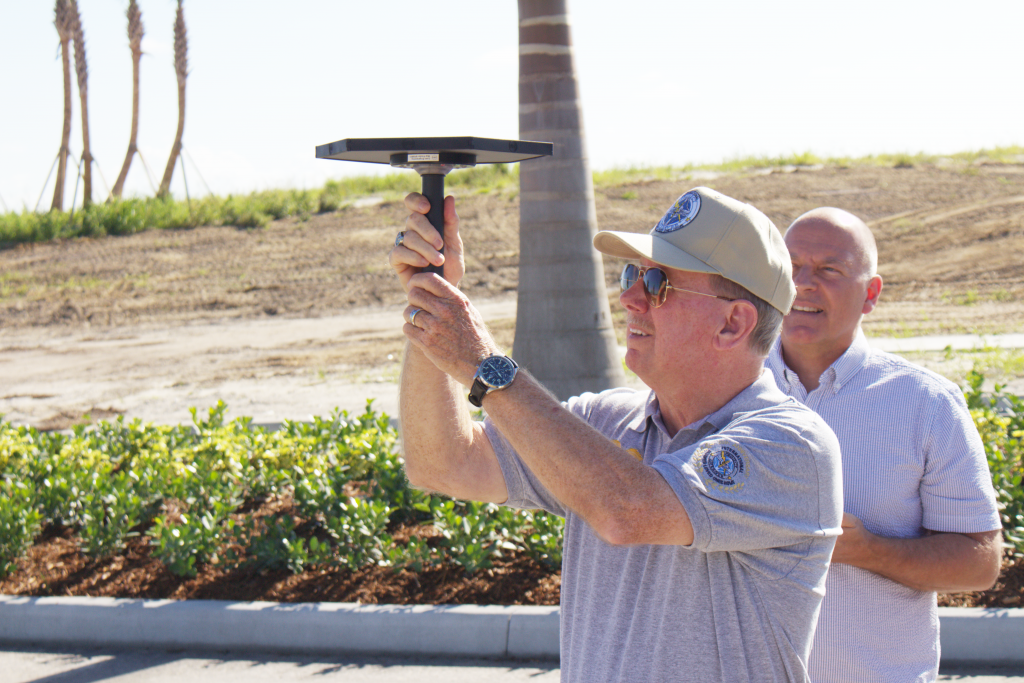Project Lifesaver has always been very open about its practice to continuously advance the technologies and equipment that are utilized throughout our program. To me, that is one of the most important aspects of our organization because remaining comfortable in our practices limits our ability to achieve our mission and safeguard all the individuals we serve.
For that exact reason, I refuse to allow our organization to become complacent.
Approximately a year ago, we were introduced to a new prototype by Loen Engineering, a company we have worked closely with for many years as we have continued to make advancements. At the time, the device had limited functionalities and was far from a final product, but I saw tremendous potential.
Needless to say, I was intrigued and hopeful for the future of Project Lifesaver.
Two weeks ago, Chief Ballance and I had the opportunity to train with this new equipment and we were surprised by what we experienced. I ended the week with even more hope for the future of this program, because like I had suspected from day one, this really will be a game-changer.
Unlike our current equipment, the all-new PLI STAR System has integrated both RF and GPS technologies into its operation… something never seen before in this industry!
 There are four major components of the PLI STAR System:
There are four major components of the PLI STAR System:
- The STAR Bracelet, worn by the client. More to come about these at a later date!
- A smartphone app. First responders utilize this app to initiate a search, and it will act as the interface to communicate to the searchers the data being retrieved by any of the STAR receivers. The strength of the radio signal and approximate distance, as well as a map of the generalized area, will be displayed on the interface. When available, the app will switch to a GPS functionality which will map and display a more precise location of the individual and distance from the searcher’s location. The app is both iOS and Android compatible.
- The STAR Finder. Unlike our current equipment, the STAR System utilizes visual location instead of audible. Rather than the chirp we have all grown to love on our current systems, the STAR Finder gives directional cues through LED lights shown on the device. When paired with the smartphone app, this finder provides information we have not previously had access to with other systems. This system has a range of approximately 1 mile within an urban environment.
- The STAR Air. Quite possibly our most favored component, the STAR Air is comprised of a directional Yagi antenna attached to a DJI Mavic 2 Enterprise. The exceptionally lightweight payload does not affect flight performance or battery life of the aircraft, and what we expect to be most exciting, the antenna can operate simultaneously with the camera! Signal strength will be displayed on the live video display on the DJI Flight Controller. While training with this device, we were able to receive a signal at a range of 7 miles!!
It was a great, educational week, for sure!
A few things that are important to note, though – to save some nerves of those who think they must jump right on this immediately. While we are very excited to begin offering the PLI STAR System as an option later this summer, it is just that: an option. This will not be an overnight transition, nor will it happen in any short span of time. I would guess it will be more like years before there is significant use of this system throughout our agencies. Given that the PLI STAR System is completely different than our current RF systems, there will be a handful of idiosyncrasies that could make transitioning to this system a bit more difficult than advancements made previously. This includes backward compatibility; unfortunately, something in which this device is not.
What does that mean?
Well, it means that receivers currently in use will not have the capability to track bracelets included in the new system, and this new system will not have the ability to track and locate transmitters currently in use. For existing agencies wishing to opt for this system, it would call for a thoughtful transition.
We will further discuss these topics when we present the new system to attendees at the 20th Anniversary Conference in August – when we are hopeful to have the new system available for a full launch.
Please note that we are still working to determine the protocols for which we will begin offering this as an option to our member agencies, including cost points, but we are very much looking forward to discussing this information at the conference!
